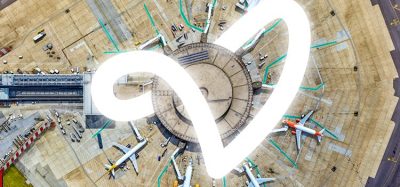Exclusive with Miami International on beacons and their resounding success
- Like
- Digg
- Del
- Tumblr
- VKontakte
- Buffer
- Love This
- Odnoklassniki
- Meneame
- Blogger
- Amazon
- Yahoo Mail
- Gmail
- AOL
- Newsvine
- HackerNews
- Evernote
- MySpace
- Mail.ru
- Viadeo
- Line
- Comments
- Yummly
- SMS
- Viber
- Telegram
- Subscribe
- Skype
- Facebook Messenger
- Kakao
- LiveJournal
- Yammer
- Edgar
- Fintel
- Mix
- Instapaper
- Copy Link
Posted: 3 January 2017 | Roy Manuell, Digital Editor | No comments yet
Having heard from SITA’s Ron Reed, Director, Business Intelligence Portfolio on why beacons are more than just a tech obsession and have empirical and real value to the airport industry, we asked Miami International to talk us through their exciting success in the world of beacons…
1. What can beacons do for the airport and aviation industry?
Implementing beacon technology with airport mobile apps can significantly improve the passenger experience in multiple ways, including simplifying the check-in process and providing security wait times, walk times to your gate, and information about points of interest in between. Version 3 of the MIA Airport Official mobile app, scheduled for launch in 2017, will utilise our airport-wide network of data beacons to provide personalised proximity marketing from MIA and airport vendors to our passengers, for notifications such as special events, discounts and new products and services. Beacons have made such an impression and impact that Airports Council International has created a beacon registry task force to develop an industry-wide policy document.
2. For the benefit of our readership, could you outline how the location-aware app at Miami is working?
The application has delivered on expectations, providing passengers the ability to scan their boarding pass and immediately receive turn-by-turn, blue-dot navigation with estimated walk times, real-time flight updates, and shopping and dining suggestions nearby based on their customisation personal profile. Other services include:
- Scan your boarding pass or search for flights by destination, airline and flight number;
- Subscribe to flight notifications and receive updates for flight, gate and baggage carousels changes, as well as an option to share your flight information;
- Navigate airport maps with blue-dot beacon technology for detailed way-finding;
- Powerful search engine with extensive database of amenities;
- Visual directions with walk times to find your gate, restaurants and more; Location-aware technology that pins your location and anticipates your needs;
- Geo-fence technology that recognises and welcomes you, whether you’re driving or flying to MIA;
- Customisation personal profile with the option to save your favourite shops and restaurants;
- Weather information in Miami and throughout the world; and,
- “Near me” feature that provides the closest dining and shopping options.
![]()
![]()
In terms of customer engagement, the app has had more than 140,000 downloads since November 2014, or an average of 5,000 downloads per month.
3. What precise benefits have you seen since the installation of the app?
The app has provided enhanced customer service and engagement for our passengers, especially for those who are connecting and/or have longer-than-average dwell times. At MIA, for example, 40 percent of our passengers are connecting, and many of those passengers spend hours at MIA in between long-haul international flights. We developed the MIA mobile app in large part to give passengers a hand-held information counter, if you will.
“The app has had more than 140,000 downloads since November 2014…”
They can quickly search how much time it takes to get their connecting gate, where their favourite shop or restaurant is, and even how to quickly get from MIA to South Beach on a long layover. Instead of tracking down an information counter, airport directory or airport employee, they can get answers to most of their questions with their fingertips.
4. Do you plan on expanding and improving your use of this technology?
Our intentions are to leverage this technology beyond the customer experience to also increase our business revenue and operational efficiency.
5. On a more general note, do you think airports are investing enough in IT solutions?
Based on IT trend surveys conducted recently, we continue to see an increase in IT spending across the U.S. airport system.
6. What can we predict to next see from Miami in terms of its use of innovative technology?
As we explore more ways to leverage technology into our customer service delivery, we will be evaluating self-boarding gates, common baggage drop-off systems, and additional mobile app services for the travelling public and MIA’s 30,000+ badged employees.


















